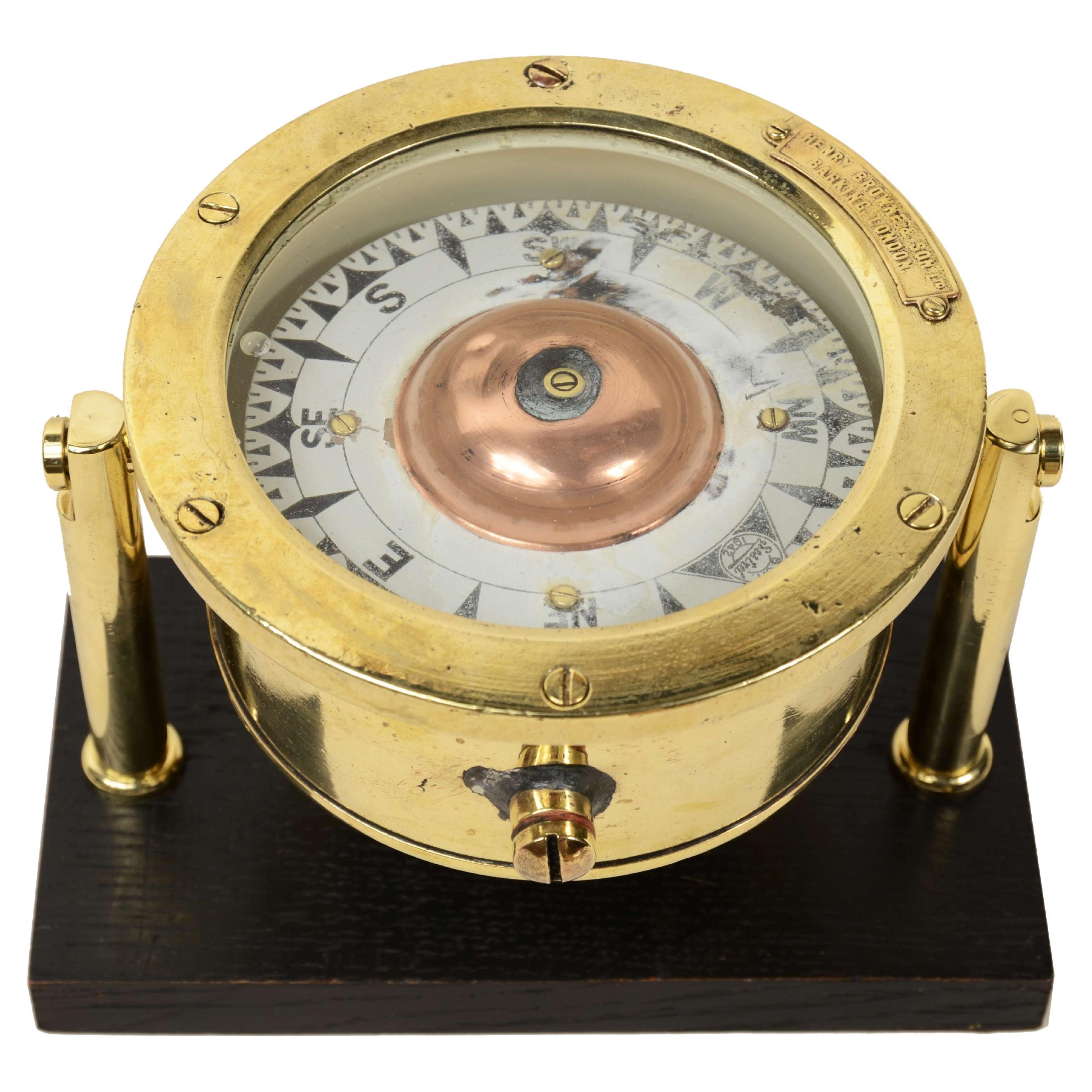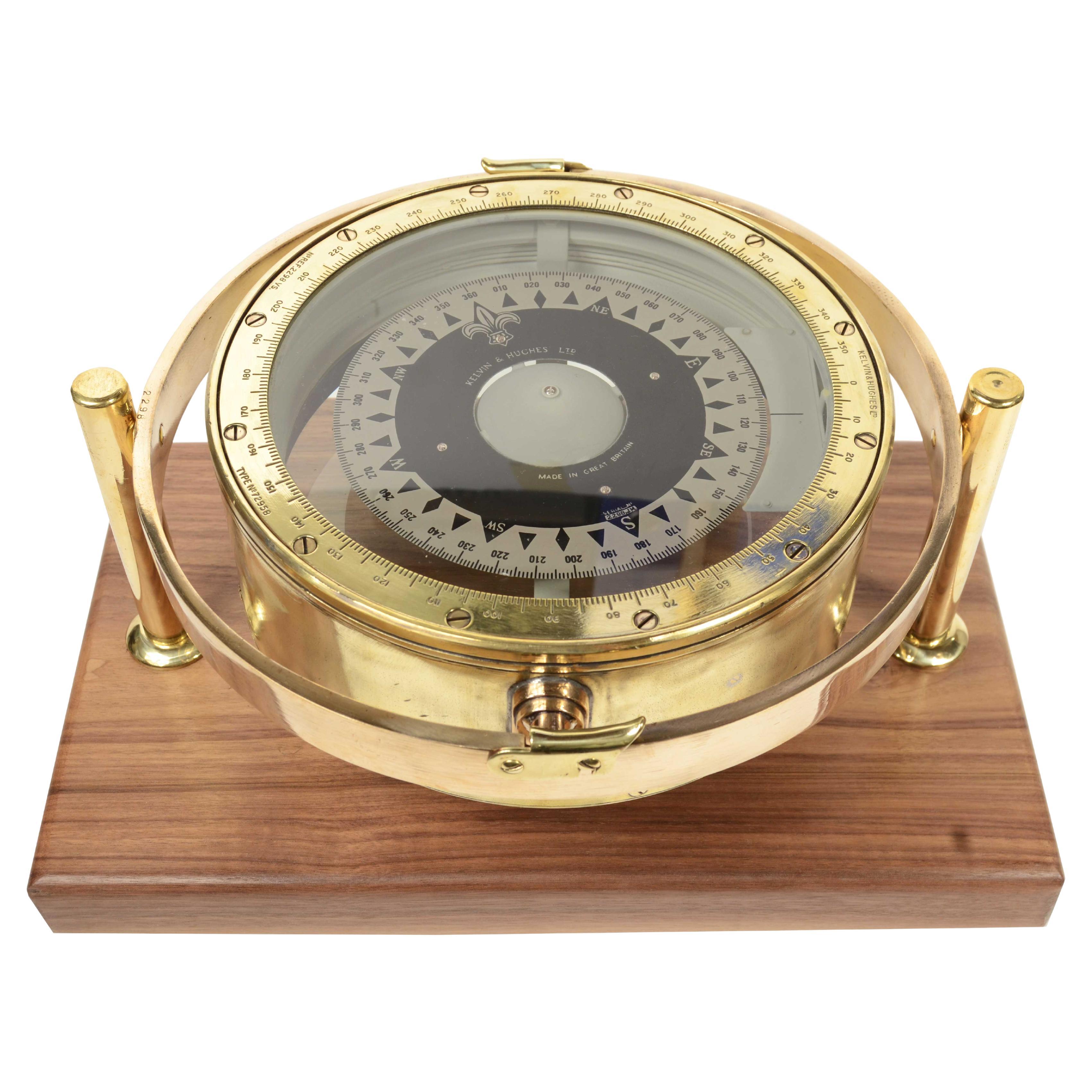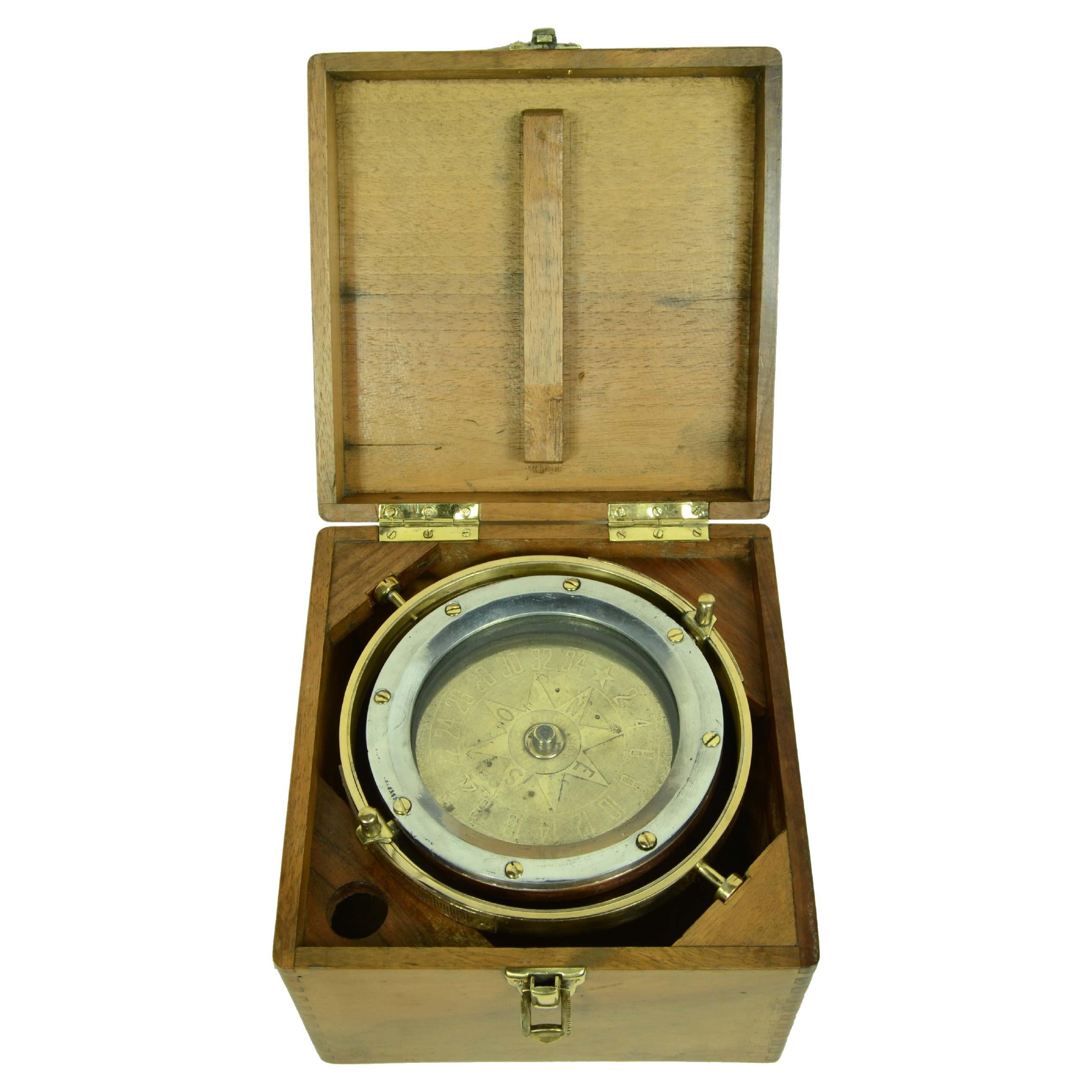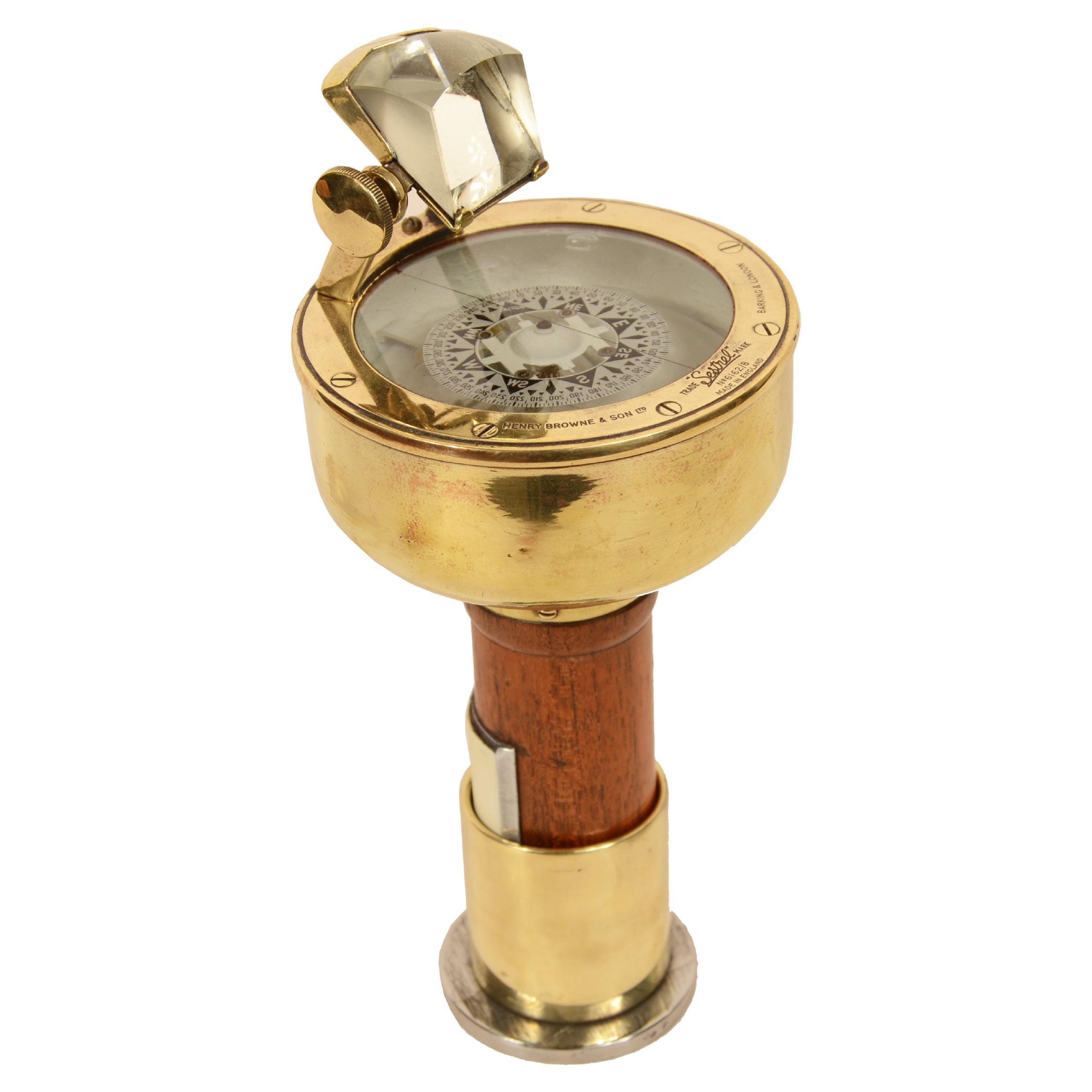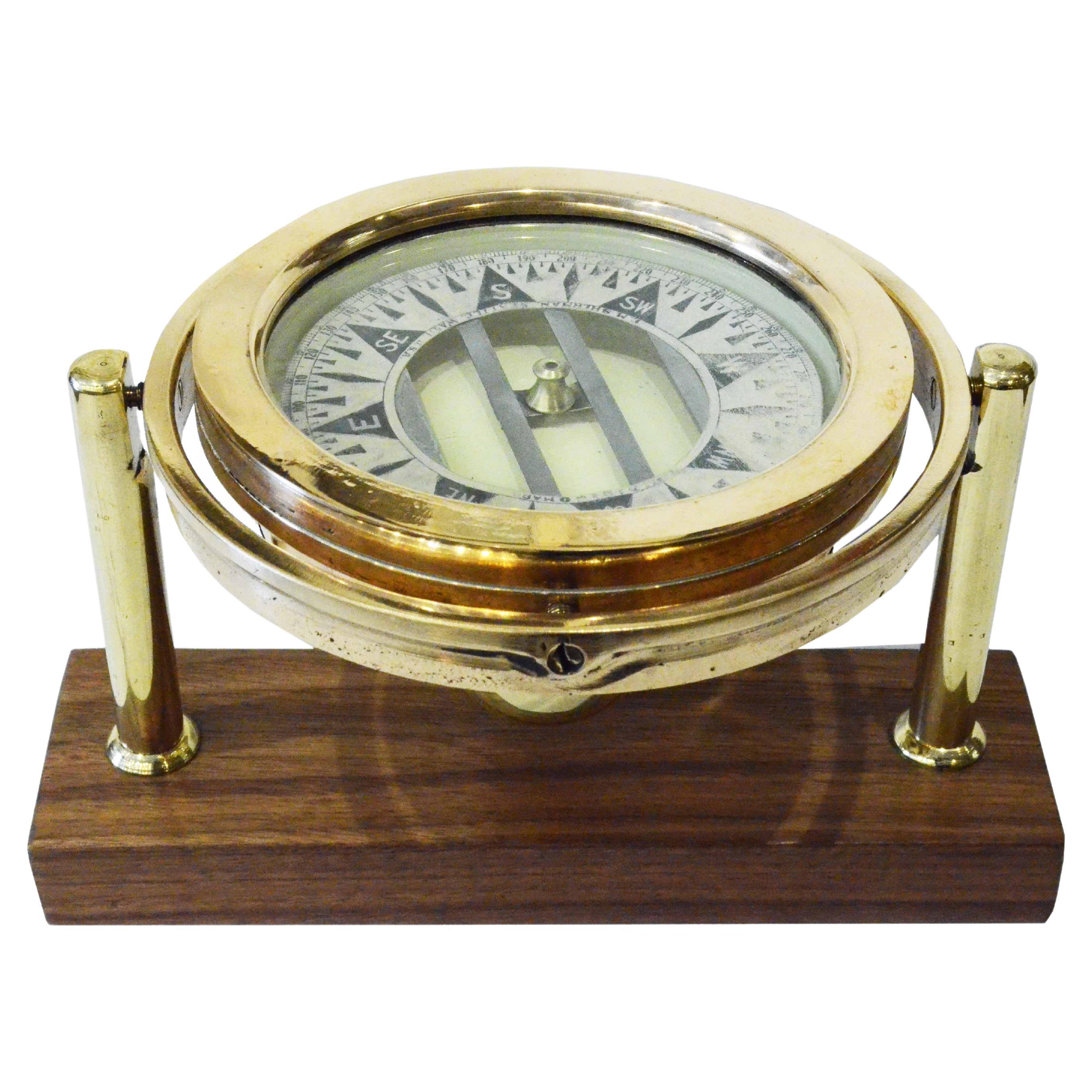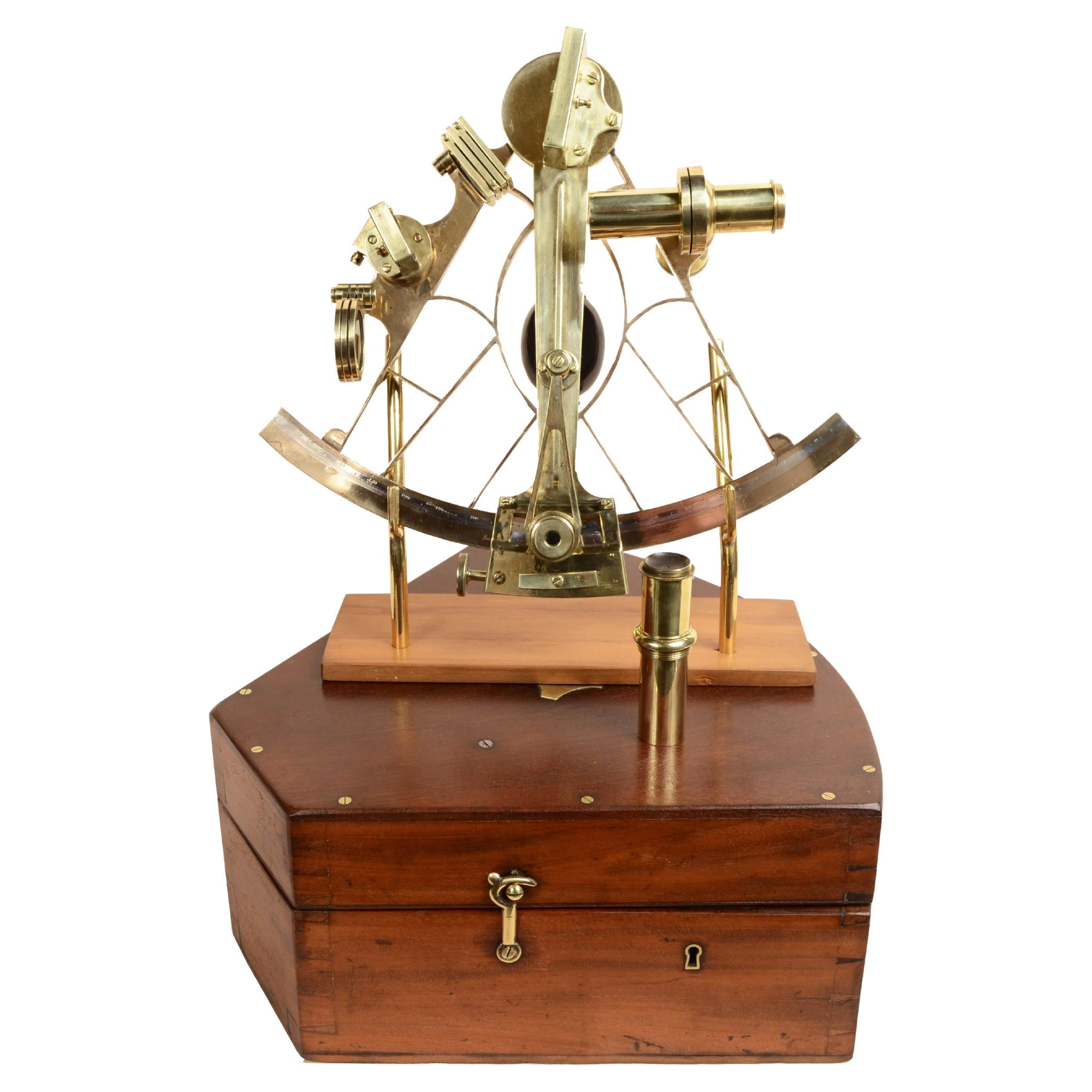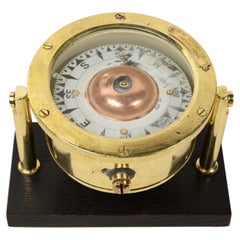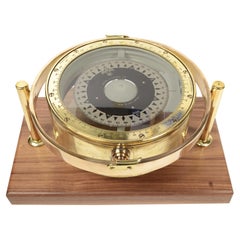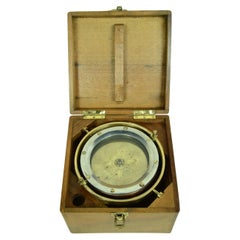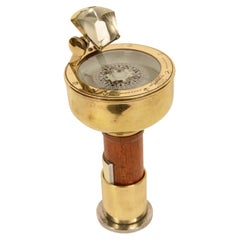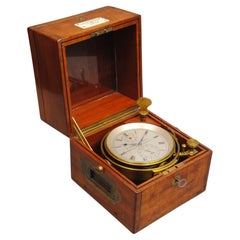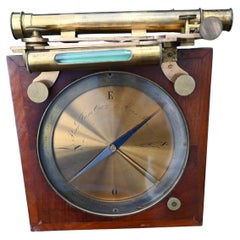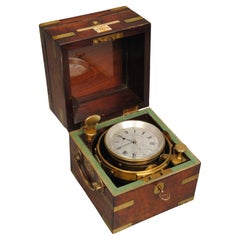Items Similar to Nautical survey magnetic compass signed Elliott Bros London late 1800s
Want more images or videos?
Request additional images or videos from the seller
1 of 19
Nautical survey magnetic compass signed Elliott Bros London late 1800s
$1,319.93
£973.39
€1,100
CA$1,822.81
A$2,000.05
CHF 1,046.74
MX$24,613.89
NOK 13,187.29
SEK 12,351.86
DKK 8,377.85
About the Item
Rare magnetic nautical surveying compass, brass, late 19th century signed Elliott Bros London complete with leather case. This is a small compass, 7 cm diameter, typically used in recreational sailing, thus on boats less prone to magnetic deviation. It can also be held in the hand and thus away from the magnetic fields of the boat. It’s equipped with a sighting system with target complete with optical prism for magnification and a goniometric eight-wind rose on paper so that the angle between the line of sight and the north indicated by the magnetic needle can be measured. Complete with wind rose block. Bon état. 7 cm diameter - inches 2.8, thickness cm 2 - inches 0.8.
Elliott Brothers was a renowned manufacturer of scientific instruments in London between 1853 and 1873. The company was founded in 1804 by William Elliott and was one of the leading manufacturers of scientific instruments in the 19th century. In 1850 William Elliott joined his sons Frederick and Charles, and the company became Elliott & sons: it was headquartered at 56 Strand in London. The firm Elliott & sons presented its instruments at the Great Fair of 1851, winning medals for electric telegraphs, globes, maps and drawing instruments. Frederick and Charles took over the firm in 1853, and it then became Elliott Brothers: while their father specialized in drawing instruments, they expanded the product range, making, for example, mathematical, optical and meteorological instruments.
The Greeks and the Romans were still unaware of the possibility of harnessing magnetic fields for orientation, while it seems that this possibility was already somewhat known to the Chinese: around 2600 B.C. Emperor Hoang-Ti was able to overcome Prince Tchi-Yeou in battle thanks to a "magic" chariot, the See-Nan (chariot pointing south). The emperor, thanks to this device, identified the enemy's escape route, despite the fact that the enemy had concealed it through a blanket of smoke: fixed on the chariot was a human-shaped wooden silhouette that rotated on itself and, with its arm outstretched, always pointed south (pointing south of course was also pointing north at the same time, but south was considered by the Chinese to be the most important cardinal point). The Chinese also used their discoveries related to magnetic fields as a form of entertainment and spectacle: they would throw magnetized arrows as if they were dice, and these would line up in a south-north direction as if by magic, which greatly impressed and amazed the spectators.
The last photo is the gift box.
- Dimensions:Height: 0.8 in (2.04 cm)Diameter: 2.8 in (7.12 cm)
- Materials and Techniques:
- Period:
- Date of Manufacture:1890
- Condition:Wear consistent with age and use.
- Seller Location:Milan, IT
- Reference Number:1stDibs: LU1020238637142
About the Seller
5.0
Vetted Professional Seller
Every seller passes strict standards for authenticity and reliability
Established in 1999
1stDibs seller since 2014
398 sales on 1stDibs
Typical response time: 2 hours
- ShippingRetrieving quote...Shipping from: Milan, Italy
- Return Policy
Authenticity Guarantee
In the unlikely event there’s an issue with an item’s authenticity, contact us within 1 year for a full refund. DetailsMoney-Back Guarantee
If your item is not as described, is damaged in transit, or does not arrive, contact us within 7 days for a full refund. Details24-Hour Cancellation
You have a 24-hour grace period in which to reconsider your purchase, with no questions asked.Vetted Professional Sellers
Our world-class sellers must adhere to strict standards for service and quality, maintaining the integrity of our listings.Price-Match Guarantee
If you find that a seller listed the same item for a lower price elsewhere, we’ll match it.Trusted Global Delivery
Our best-in-class carrier network provides specialized shipping options worldwide, including custom delivery.More From This Seller
View AllNautical magnetic compass, signed by Henry Browne & Son Ltd Sestrel 1942.
Located in Milan, IT
Nautical magnetic compass, signed by Henry Browne & Son Ltd Sestrel 1942, Barking & London 1942. Good condition, slight abrasion on compass rose. The compass is mounted on eboni...
Category
Vintage 1940s Nautical Objects
Materials
Brass
Large brass magnetic nautical compass signed KELVIN & HUGHES early 1900s
Located in Milan, IT
Large brass and glass magnetic nautical compass, signed KELVIN & HUGHES Ltd, Made in Great Britain Serial No. 2298 J.M. Made in Britain in the early 1900s, mounted on a custom-made w...
Category
Antique Early 1900s Nautical Objects
Materials
Brass
Nautical compass on cardan joint signed La Filotecnica Milano from the early 1900s
Located in Milan, IT
Nautical compass on gimbal made by Filotecnica Milano of the early 1900s. The compass consists of a copper and glass vessel; at the bottom, a metal stem is attached to which rests t...
Category
Vintage 1910s Nautical Objects
Materials
Copper
Compass by hand magnetic sensing, signed Henry Browne & Son early 1900s
Located in Milan, IT
Compass by hand magnetic sensing, signed Henry Browne & Son Ltd Sestrel Made in England, No. 6162/B Barking & London early 1900s Height 25 cm - inches 9.8, compass diameter 10.5 ...
Category
Antique Early 1900s Nautical Objects
Materials
Brass
Brass nautical compass signed DIRIGO Eugen M. Sherman Seattle USA 1920
Located in Milan, IT
Nautical compass on gimbal signed DIRIGO Eugen M. Sherman Seattle USA 1920s, mounted on custom-made walnut and brass board. Eight-twenty rose complete with protractor circle. The com...
Category
Vintage 1920s Nautical Objects
Materials
Brass
Brass sextant signed Imray & Son 89 & 102 Minories London mid-19th century
Located in Milan, IT
Brass sextant signed Imray & Son 89 & 102 Minories London, datable to around mid-19th century, instrument housed in its original mahogany box shaped like the instrument with hinges, ...
Category
Antique Mid-19th Century Nautical Objects
Materials
Brass
You May Also Like
A Fine Marine Chronometer by Haswell And Sons NO. 2923 With Interesting History
Located in Lincolnshire, GB
A two day marine chronometer in the original brass bound mahogany case.
Purchased by the Admiralty in 1895, it was 27th in the annual trial of chronometers at the Royal Observatory, ...
Category
Antique Late 19th Century English Nautical Objects
Materials
Brass
Antique Surveyor's Circumcompendium Signed Brand Frères, 1850-1880
Located in Bilzen, BE
"Antique Surveyor's Circumcompendium Signed Brand Frères, 1850-1880"
Description: Antique Surveying Circumferentor by Brand Frères
Brand Frères, Optic...
Category
Antique Mid-19th Century Belgian Other Scientific Instruments
Materials
Brass
Pre World War I Nautical Compass by E.S.Ritchie
Located in Norwich, GB
Pre World War I Nautical Compass by E.S.Ritchie
Nautical compass mounted by a brass gimbal into a copper brass bound case with sloping glazed aperture with heavily bevelled glass. Flat brass bezel with five holding screws signed ‘E.S.Ritchie’ and numbered 5779. Side opening compartment for a lighted wick with drawer beneath.
The compass is mounted in a heavy painted brass bowl with very fine copper pivot supporting the floating direction card. A diaphragm is located in the base of the bowl for temperature compensation. c.1910
E.S.Ritchie founded the business in 1850 to manufacture mechanical, electrical and scientific instruments. In 1857 he turned his attention to navigational instruments and begun making marine bearing compasses for the U.S.Navy before the American civil war. At the time the British admiralty dry mounted nautical compasses were considered by all navies and commercial shipping companies as the highest technological standard of the day, however, in 1860 Ritchie had received a US patent for the first successful and practical liquid-filled marine compass for general use. A major step forward in the technology of the compass. With the damping provided by the liquid, together with gimbal mounting, the floating card of the Ritchie compass...
Category
Vintage 1910s Nautical Objects
Materials
Copper
A Fine Early 19th Century Marine Chronometer By Parkinson And Frodsham
Located in Lincolnshire, GB
An early 19th century 2 day marine chronometer by Parkinson and Frodsham, London. Numbered on the brass bound mahogany 3 tier box, and the dial ...
Category
Antique Early 19th Century English Scientific Instruments
Materials
Brass
Gimballed Brass Boat Compass by Dirigo
Located in Norwell, MA
Gimballed brass boat compass by "Dirigo" of Seattle, Washington. With fleur-de-lis pointing north. Fitted to a birch box with lid. Circa 1975.
Overall Dimensions: 5" H x 8" L x 8"...
Category
Vintage 1970s American Nautical Objects
Materials
Brass
Antique Yacht Or Boat Binnacle Compass by Polaris
By Polaris
Located in Norwell, MA
Boat compass in binnacle with hinged lid, sidelight, brass hook, etc. Very fine condition. Gimballed compass is by Polaris. Great piece.
Overall dimensions: 11"H x 7"D x 8"L. 5 po...
Category
Antique 1890s American Nautical Objects
Materials
Brass
